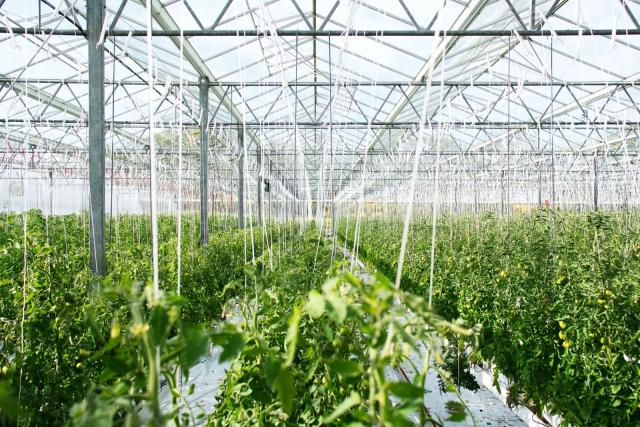
Agriculture technology (AgTech) is rapidly transforming the way we produce food, offering innovative solutions to age-old farming challenges. As the global population continues to grow, the demand for sustainable and efficient food production systems has never been greater. Emerging AgTech trends are not only enhancing productivity but also addressing critical issues such as climate change, resource scarcity, and food security. This article explores seven pivotal AgTech trends poised to revolutionize agriculture in 2024, providing insights that are seldom considered by industry experts. By understanding and adopting these trends, software developers can contribute to creating a more resilient and advanced agricultural sector. Dive in to discover how technology is reshaping the future of farming and why keeping abreast of these developments is crucial for both developers and farmers. For more information on how technology is impacting agriculture, visit https://www.trinetix.com/industries/agriculture.
The Rise of Smart Farming
Smart farming represents the convergence of agriculture and technology, leveraging IoT, AI, and robotics to optimize farm operations. Precision agriculture, for instance, uses GPS and data analytics to ensure that crops receive the exact amount of water, nutrients, and pesticides they need. This minimizes waste and maximizes yield. Drones equipped with multispectral imaging can monitor crop health in real-time, identifying issues like pest infestations or nutrient deficiencies before they become critical. Autonomous tractors and machinery further enhance efficiency, allowing for continuous operation without human intervention. These advancements not only boost productivity but also significantly reduce the environmental footprint of farming. By integrating these technologies, farmers can achieve higher precision and efficiency in their operations, paving the way for a more sustainable agricultural future.
Sustainable Farming Practices
Sustainable farming practices are essential for addressing the environmental challenges posed by traditional agriculture. Vertical farming, for instance, allows for the cultivation of crops in stacked layers, often within urban environments, reducing land use and transportation costs. Regenerative agriculture focuses on restoring soil health through practices like cover cropping, crop rotation, and minimal tillage, which enhance biodiversity and sequester carbon. Water conservation technologies, such as drip irrigation and moisture sensors, help farmers use water more efficiently, addressing the growing concern of water scarcity. These practices not only make farming more sustainable but also improve the resilience of agricultural systems to climate change and other external shocks. By adopting these methods, farmers can contribute to a healthier planet while ensuring long-term productivity and profitability.
Biotechnology and Genomics
Biotechnology and genomics are unlocking new possibilities for improving crop yields and resilience. CRISPR and other gene-editing technologies enable precise modifications to plant genomes, creating crops that are resistant to diseases, pests, and environmental stresses. Synthetic biology goes a step further, allowing scientists to design and construct new biological parts, devices, and systems that do not exist in nature. This can lead to the development of crops with enhanced nutritional profiles or even the ability to produce pharmaceuticals. Advances in seed technology, such as the development of hybrid seeds that combine the best traits of different varieties, are also driving productivity gains. By harnessing the power of biotechnology and genomics, we can develop crops that are better suited to meet the challenges of the 21st century, ensuring food security and sustainability.
Data-Driven Agriculture
Data-driven agriculture leverages big data analytics, AI, and blockchain to transform farm management and decision-making processes. Big data analytics provides farmers with actionable insights based on vast amounts of data collected from various sources, including satellite imagery, weather forecasts, and soil sensors. AI and machine learning algorithms can predict crop yields, optimize planting schedules, and detect diseases early. Blockchain technology ensures transparency and traceability in the agricultural supply chain, enabling consumers to know the origin and journey of their food. This combination of technologies allows for more precise and informed decision-making, leading to higher productivity and reduced waste. As data becomes increasingly central to agricultural practices, software developers have the opportunity to create innovative solutions that harness this data to drive efficiency and sustainability in farming.
Robotics and Automation
Robotics and automation are revolutionizing agriculture by performing tasks that were once labor-intensive and time-consuming. Robotic harvesting systems can pick fruits and vegetables with precision, reducing the need for manual labor and increasing efficiency. In greenhouses, automated systems control environmental conditions such as temperature, humidity, and lighting to optimize plant growth. AI-powered farm management systems integrate various aspects of farm operations, from planting to harvesting, into a single platform, allowing for seamless coordination and control. These advancements in robotics and automation not only improve productivity but also address labor shortages and reduce the physical strain on farmers. As technology continues to advance, we can expect to see even more sophisticated and capable agricultural robots, further transforming the landscape of farming.
|
Technology |
Application |
Benefits |
|
Robotic Harvesting |
Picking fruits and vegetables |
Reduces labor costs, increases efficiency |
|
Greenhouse Automation |
Environmental control |
Optimizes plant growth, conserves resources |
|
AI Farm Management |
Integrated farm operations |
Enhances coordination, improves productivity |
Agri-Fintech Solutions
Agri-fintech solutions are empowering farmers by providing access to financial services tailored to their unique needs. Digital payment systems facilitate transactions, making it easier for farmers to buy and sell goods and services. Agricultural insurance technologies offer coverage against risks such as crop failure, helping farmers recover from losses and continue their operations. Microfinance platforms provide small-scale farmers with access to credit, enabling them to invest in equipment, seeds, and other inputs needed to improve their productivity. These financial innovations are crucial for supporting the growth and sustainability of the agricultural sector, particularly in developing regions where traditional financial services may be lacking. By leveraging agri-fintech solutions, farmers can better manage their finances and invest in the future of their farms.
Future Outlook and Conclusion
The future of agriculture technology is full of promise, with ongoing advancements poised to further transform the industry. Emerging trends such as the use of renewable energy in farming, advanced bioinformatics for crop improvement, and the integration of augmented reality (AR) and virtual reality (VR) in farm management systems are just a few areas to watch. As we look ahead, it is clear that technology will continue to play a crucial role in addressing the challenges of food security, climate change, and sustainable development. For software developers, staying informed about these trends and actively contributing to the development of AgTech solutions is essential. By doing so, they can help shape a more sustainable and productive future for agriculture.






